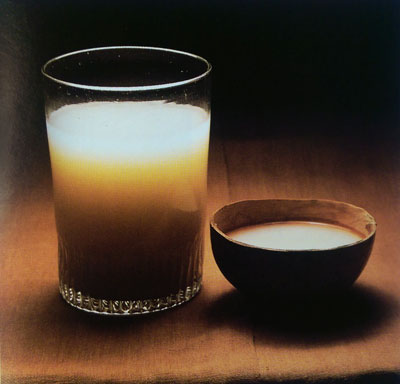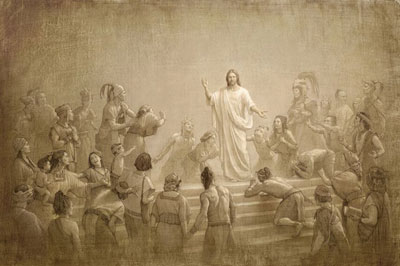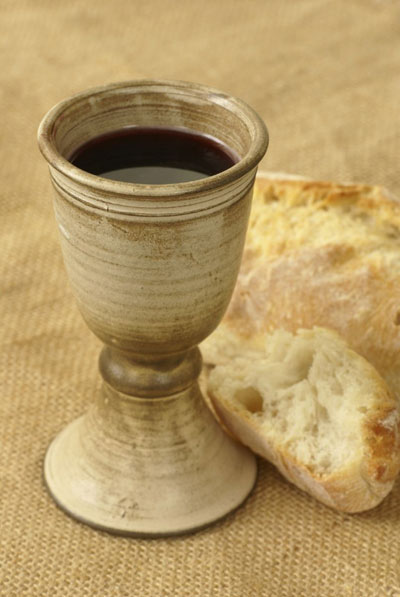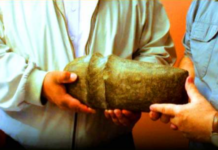
“He that eateth this bread, eateth of My body to his soul; and he that drinketh of this wine, drinketh of My blood to his soul, and his soul shall never hunger nor thirst, but shall be filled.” 3 Nephi 20:8
2 Nephi 15:1-2 (Compare Isaiah 5) “And then will I sing to my well-beloved, a song of my beloved, touching His vineyard: My well beloved hath a vineyard in a very fruitful hill. And He fenced it, and gathered out the stones thereof, and planted it with the choicest vine, and built a tower in the midst of it, and also made a winepress therein, and He looked that it should bring forth grapes, and it brought forth wild grapes”
Where do you think the wine spoken of in the Book of Mormon is most likely to come from? Mesoamerica, USA Heartland, or somewhere else?

Vinland was the name given to part of North America by the Icelandic Norseman Leif Eríksson, about year 1000 A.D. The exact meaning of this Norse name has not been yet established but seems historically to mean the “land of vines” (or “land of wine”) where he discovered wild grapes, as shown in the above photo of Vitis labrusca, or “fox grape.” “The earliest record of the name Vinland is found in Adam of Bremen’s ‘Description of the Northern Islands,’ ch. 39), written c. 1075, where he reported one island [Newfoundland], discovered by many in that ocean, ‘which is called Vinland, for the reason that grapevines grow there by themselves, producing the best wine.’” – Birgitta Linderoth Wallace, “Westward Vikings: The Saga of L’Anse aux Meadows,” St. John’s, Newfoundland: Historic Sites Association of
Newfoundland and Labrador in association with Parks Canada [2006]. (Note: the Managing Editor’s Cape Cod High School Mascot is a Viking and the above photo of wild fox grapes was taken on the Cape.)
“Leif Eriksson was the son of Erik the Red, founder of the first European settlement on what is now called Greenland. Around A.D. 1000, Eriksson sailed to Norway, where King Olaf I converted him to Christianity. According to one school of thought, Eriksson sailed off course on his way back to Greenland and landed on the North American continent, where he explored a region he called Vinland. He may also have sought out Vinland based on stories of an earlier voyage by an Icelandic trader. After spending the winter in Vinland, Leif sailed back to Greenland, and never returned to North American shores. He is generally believed to be the first European to reach the North American continent, nearly four centuries years before Christopher Columbus arrived in 1492.
Leif Eriksson’s Early Life and Conversion to Christianity
Leif Eriksson (spelling variations include Eiriksson, Erikson or Ericson), known as “Leif the Lucky,” was the second of three sons of the famed Norse explorer Erik the Red, who established a settlement in Greenland after being expelled from Iceland around A.D. 980. The date of Leif Eriksson’s birth is uncertain, but he is believed to have grown up in Greenland. According to the 13th-century Icelandic Eiriks saga (or “Saga of Erik the Red”), Eriksson sailed from Greenland to Norway around 1000. On the way, he was believed to have stopped in the Hebrides, where he had a son, Thorgils, with Thorgunna, daughter of a local chief. In Norway, King Olaf I Tryggvason converted Eriksson to Christianity, and a year later sent him back to Greenland with a commission to spread the faith among the settlers there.
Did you know? After Leif Eriksson returned to Greenland, his brother Thorvald led another Viking expedition to Vinland, but all future efforts to settle in the region failed due to bitter clashes between the Norsemen and the local Native American population. Thorvald himself died in a skirmish somewhere north of the Viking base.” https://www.history.com/topics/exploration/leif-eriksson

“And it came to pass that Jesus commanded His Disciples that they should bring forth some bread and wine unto Him. And while they were gone for bread and wine, He commanded the multitude that they should sit themselves down upon the earth. …And it came to pass that when He said these words, He commanded His Disciples that they should take of the wine of the cup and drink of it, and that they should also give unto the multitude that they might drink of it.” (3 Nephi 18:1-2; 8; emphasis added). “A choice land above all others” (Ether 13:2) has to have the right climate and seasons for growing grapes that can be made into wine.

Earlier in the book of Mosiah we learned that King Noah was fond of wine: “And it came to pass that he planted vineyards round about in the land; and he built wine-presses, and made wine in abundance; and therefore he became a wine-bibber, and also his people” – Mosiah 11:15, emphasis added. Vineyards are plantations of grape-bearing vines, grown mainly for making wine. Annotated Book of Mormon by David Hocking and rod Meldrum Page 327
I believe it’s important to think about the source of the wine that is spoken of in the scriptures. Does it make more sense to you that the wine of the Book of Mormon came from Mesoamerica or from the Heartland? You may not care and that is fine, but I wanted to give you two sides of the story and then let you decide which makes more sense to you.
Pulque in Mesoamerica
 Pulque [‘pulke](Classical Nahuatl: metoctli), or octli, is an alcoholic beverage made from the fermented sap of the maguey (agave) plant. It is traditional to central Mexico, where it has been produced for millennia. It has the color of milk, somewhat viscous consistency and a sour yeast-like taste. Source Wikipedia
Pulque [‘pulke](Classical Nahuatl: metoctli), or octli, is an alcoholic beverage made from the fermented sap of the maguey (agave) plant. It is traditional to central Mexico, where it has been produced for millennia. It has the color of milk, somewhat viscous consistency and a sour yeast-like taste. Source Wikipedia
During the times of the Book of Mormon I think the symbolism of white pulque instead of red wine doesn’t make sense to me. “When the Vikings arrived in America they called the land Vinland. Vinland was the name given to part of North America by the Icelandic Norseman Leif Eríksson, about year 1000 A.D. The exact meaning of this Norse name has not been yet established but seems historically to mean the “land of vines” (or “land of wine”) where he discovered wild grapes.” See Page 327 Annotated Book of Mormon

“Close analyses of glyphic, iconographic, and ethnographic evidence from the Maya area reveal that pulque, often associated exclusively with the cultures of central Mexico, was known, valued, and consumed in the Maya area as well. Such studies also reveal numerous parallels between the ritual significance of pulque in the Maya area and its meaning in the Aztec world. Both groups appear to have associated pulque with water, blood, and vomit, all of which were deeply connected with themes of purification, sacrifice, and renewal. Far from being the sinful substance so often maligned in colonial accounts, pulque appears instead to have played a significant and complex role in the religious practices of widespread Mesoamerican cultures”
https://www.academia.edu/3811531/Blood_Water_Vomit_and_Wine_Pulque_in_Maya_and_Aztec_Belief
What Book of Mormon Central Believes about Wine in the Book of Mormon
Mosiah 11:15 The Know
 The Book of Mormon only mentions one beverage among the Nephites and Lamanites: wine. During King Noah’s reign in the land of Nephi, for instance, it mentions that he had “planted vineyards round about in the land,” had “built wine-presses, and made wine in abundance,” thus he and his people became wine-bibbers (Mosiah 11:15). Wine is also mentioned in several other places throughout the Book of Mormon, including for the sacrament during the risen Lord’s ministry among the Nephites. 1
The Book of Mormon only mentions one beverage among the Nephites and Lamanites: wine. During King Noah’s reign in the land of Nephi, for instance, it mentions that he had “planted vineyards round about in the land,” had “built wine-presses, and made wine in abundance,” thus he and his people became wine-bibbers (Mosiah 11:15). Wine is also mentioned in several other places throughout the Book of Mormon, including for the sacrament during the risen Lord’s ministry among the Nephites. 1
Planting vineyards and having wine-presses sounds very probable in North America. Heartlanders generally believe the Nephites lived in Northern Georgia and Eastern Tennessee after first arriving in the panhandle of Florida. See my blog here.
Wine is spoken of all over in the Old World and in North America. See 10 of the Most Beautiful North Georgia Vineyards “Temperate sunny days, cool mountain nights, and calming summer breezes make North Georgia’s climate an ideal one for growing high-quality wine grapes. Whether you’re a lover of red wine or prefer the taste of a crisp white, these thriving North Georgia vineyards produce some of the tastiest and most complex wine in the country!” Also see, Dahlonega Best Wine “Wine enthusiasts need venture no further than the foothills of the North Georgia mountains to enjoy award-winning wines and breathtaking views. With the highest concentration of wineries, vineyards, and tasting rooms in the state, Dahlonega is known as the Heart of Georgia Wine Country and the Wine Tasting Room Capital of Georgia.” Dahlonega is also the place gold was first discovered in Hall County (now Lumpkin County) by resident Benjamin Parks with the discovery on October 27, 1828 long before California in 1849. This area is also close to where we feel Nephi had access to much gold, silver and copper. There are thousand of references to wine in North America.
Because there is a wide variety of different wines, “made from fermented grapes or other fruits,”2 it is impossible to be certain what kind of drink is meant, beyond assuming it’s a fermented fruit juice. Moreover, the Hebrew word for “vineyard” can mean an oil orchard. So these terms are broader in meaning than modern English readers might think.3 I believe what is meant is good old fashioned red wine from the grapes in the Old World and in the New World of North America. I don’t think the words vineyard and winepress could mean anything found in Mesoamerica.
Alcoholic beverages were made from a variety of fruits in the Americas before Columbus. These include bananas, pineapple, and agave, among others. Natives also used palm sap and tree bark with honey to make alcoholic beverages in pre-Columbian times. All of these were called “wine” by the Spaniards who first mentioned them in their writings. Spanish sources also spoke of “vineyards” of agave plants.4
BMC says vinelands of agave plants were spoken of, but it is a John Sorensen quote from his book. Maybe the Spanish drank pulque I don’t know.
The Book of Mormon itself never actually mentions grapes, but it does mention “wine-presses” (only once, Mosiah 11:15), 5 perhaps indicating grape-based wine. (It does mention grapes and wine-press in the quoting of Isaiah 5 and I believe the Old World had the same grapes as the ones here in North America. Not “perhaps” it does speak of grape-based wine.) American species of grapes were known to grow in the Gulf Coast and Yucatan areas, and some natives in northern Mexico reportedly made red wine from native grapes.6 They say “reportedly” made, and then notice note 6 below just giving a reference to Mormon’s Codex which is written by John Sorensen who is the main believer in Mesoamerica. No references or even suggestions from heatlanders or others with a different opinion.
There is no question that grapes and vineyards can grow in a number of areas throughout North and South America, including near Guatemala City where the Chateau DeFay winery and vineyards were established in 2008. 7 (How do we know they grow in Guatemala as all references below are from BMC employees or those who believe in the Mesoamerican theory. If it does show references other than just Mesoamerican sources, I stand corrected). So it is possible that either the Lehites or the Mulekites brought grape vines with them, which were then cultivated amongst Book of Mormon peoples. (Grape vines would probably grow in latitude 30-34 degrees in Florida or Northern Georgia but would they grow in 19 degree latitude in Guatemala? I don’t know either) There is also some evidence that the Old World grape was known and used for winemaking at one site in Chiapas, Mexico dating to between the first centuries BC and AD. John L. Sorenson explained: What resources do we have in addition to John Sorensen? I honestly don’t know and I would like BMC to give me historical or archaeological evidence of these claims by someone other that a mesoamerica believer.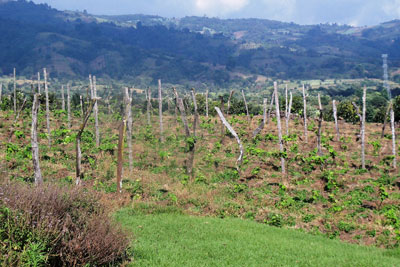
Our understanding of wine in ancient Mesoamerica was enhanced 30 years ago when Martínez M. excavated a site of Late Pre-Classic date (first centuries BC and AD) beside the Grijalva River in Chiapas …. There he carefully recovered and studied all traces of plant remains. He found seeds of Vitis vinifera, the wine grape known in Europe, from which he concluded that the fruit had been used to manufacture wine equivalent to that of the Old World.8
Where are the sources? Where can I find that information besides in John’s books?
Sorenson then concluded, “Thus the Book of Mormon statements about wine could turn out to refer either to that drink in the usual European sense or to alternative Mesoamerican intoxicants that were based on other fruits.”9
By what proof do we have of this previous statement? I think this is very unlikely as the wine of the Bible would be the wine of North America. Wine was a very holy drink and it represents the blood of the Savior, why would anyone substitute anything artificial?
The Why
Based on the above evidence, the production and use of wine in the Book of Mormon is not problematic from a historical standpoint. BMC hasn’t told me about a historical standpoint only ones from their own sources. Without more information, however, it is impossible to be certain what kind of beverage “wine” meant in the Book of Mormon. I believe it is possible. Wine of the grape in North America makes sense and in Mesoamerica makes no sense. It is likely that many, if not all, of these fermented beverages were known and used by Book of Mormon peoples, and “wine” may very well have been a catch-all term for all the varieties of alcoholic drinks available to them. What does alcoholic have to do with it? Pure wine of a new make is not alcoholic. the wine of the Savior wouldn’t be alcoholic would it?
Still, being aware of the different possibilities invites questions perhaps never before considered. You have only given us one possibility and that is somewhere in Mesoamerica. BMC why won’t you consider other possibilities? For example, visualize that sacred moment when the risen Lord asked the disciples to retrieve both bread and wine for the sacrament [sic] (3 Nephi 18:1–3, 8), and then shortly thereafter Lord Himself miraculously provided wine and bread for a second performance of that sacred ritual (3 Nephi 20:5–8). Was the miraculous wine from the Savior the same variety of wine the disciples brought? If not, why not? Why wouldn’t it be? The disciples were deeply religious and they would know what the correct wine was. They definitely knew the type of wine available and the Lord would use the wine of the country. Why would the Lord change the wine? For what purpose? Why force a situation that requires two types of wines?
Although speculative, one possible answer is that perhaps the available native wine did not strongly enough symbolize the blood of Christ.10 (Why was it the wrong color”) While accepting the disciples’ humble offer the first time, for the second occasion Christ may have chosen to miraculously produce traditional red wine from the Old World in order to more strongly convey to them His important teaching, “he that drinketh of this wine drinketh of my blood to his soul; and his soul shall never hunger nor thirst, but shall be filled” (3 Nephi 20:8). If the available native wine was white or yellow, it would not symbolize the blood of Christ would it?
This could have provided a powerful visual for Nephites accustomed to drinking yellowish colored wines. This is a shot in the dark. Why would you even mention a yellowish wine? Is that because that is the only kind of wine that is in Mesoamerica? Even if this is not the case, being aware of the different possible types of wine allows readers to better visualize Book of Mormon life. How? This is especially insightful with wine, since it is so frequently mentioned within the text of the Book of Mormon. Wine is frequently mentioned and critically important and that is why it would be the same wine in both the Old and New World. Awareness of different possible types of wine or wine colors does not help me decide or visualize the Book of Mormon. Having the wine of the Bible which is also available in the USA that may of been brought from Israel, and it would grow in North America, to me is a huge evidence of the Book of Mormon in North America.
Notice all or most of quotes below are from current advocates of a Mesoamerican setting:
Further Reading
John L. Sorenson, Mormon’s Codex: An Ancient American Book (Salt Lake City and Provo, UT: Deseret Book and Neal A. Maxwell Institute for Religious Scholarship, 2013), 307–308.
Kirk Magleby, “King Noah’s Wine,” Book of Mormon Resources, November 12, 2011, online at (accessed April 5, 2016).
- 1.See 1 Nephi 4:7; Mosiah 22:7, 10; Alma 55:8–11, 13, 30, 32; 3 Nephi 18:1–3, 8; 20:5–8; Moroni 5:1–2; Moroni 6:6.
- 2. Wikipedia, s.v., “Wine,” online at Wikipedia.org (accessed April 5, 2016).
- 3. See John A. Tvedtnes, “Vineyard or Olive Orchard,” in The Allegory of the Olive Tree: The Olive, the Bible, and Jacob 5, ed. Stephen D. Ricks and John W. Welch (Salt Lake City and Provo, UT: Deseret Book and FARMS, 1994), 477–483. Outside of old-world writings of Isaiah (in 2 Nephi 13 and 15), and Zenos (in Jacob 5), vineyards are only mentioned twice in the Book of Mormon, namely in Mosiah 11:14 (regarding Noah’s novel expansion) and Alma 28:14 (in the metaphor “to labor in the vineyards of the Lord”).
- 4.S ee John L. Sorenson, Mormon’s Codex: An Ancient American Book (Salt Lake City and Provo, UT: Deseret Book and Neal A. Maxwell Institute for Religious Scholarship, 2013), 307. Sorenson uses “maguey” when talking about agave.
- 5. 2 Nephi 15:2 is a quotation of Isaiah 5:2.
- 6. Sorenson, Mormon’s Codex, 307.
- 7. Kirk Magleby, “King Noah’s Wine,” Book of Mormon Resources, November 12, 2011, (accessed April 5, 2016). Several different models place the land of Nephi in this area. See Sorenson, Mormon’s Codex, 131–133; V. Garth Norman, Book of Mormon–Mesoamerican Geography: History Study Map (American Fork, UT: ARCON and the Ancient America Foundation, 2008), 31 (no. 48); Joseph L. Allen and Blake J. Allen, Exploring the Lands of the Book of Mormon, revised edition (American Fork, UT: Covenant Communications, 2011), 404–405.
- 8. Sorenson, Mormon’s Codex, 307–308. Sorenson is citing Alejandro C. Martínez Muriel, “Don Martín, Chiapas: Inferencias económico-sociales de una comunidad arqueológica” (thesis, Universidad Nacional Autónoma de México, 1978), 102ff., 125.
- 9.Sorenson, Mormon’s Codex, 308.
- 10.Agave, banana, and pineapple all, unsurprisingly, produce a yellowish or cider colored wine.
If you would like more information about Native American wine, there are articles below.
“America has been covered with grapevines even before varieties like Zinfandel and Cabernet Sauvignon were transplanted from Europe. Several of these native species play an important role in the world of wine, but most have been cast aside and their stories are threatened to disappear into history… Nearly all the wines that we drink today are produced with one species of grape: Vitis vinifera. V. vinifera traces its roots back to grapes in ancient Caucasus (Georgia, Armenia, Azerbaijan, etc). Vinifera grapes include all the most popular wines in the world: Cabernet Sauvignon, Pinot Noir, Chardonnay, etc. and have been studied extensively. The idiosyncrasies of making wine with V. vinifera have been fine tuned for several thousand years.”
Indigenous American Grape Varieties, A Primer
by David Mark Brown June 23, 2010 FCG, Wine Spotlight
“Of the eight species of grapes in the Vitis genus, six are native to North America, while only vinifera is native to Europe and amurensis to Asia. The powerhouse species native to Europe gives us varieties (also called cultivars) such as merlot, cabernet sauvignon, riesling, chardonnay, and sauvignon blanc. Basically every wine grape most of us can think of.
Of the six native species that had been growing in North America long before European settlers arrived, some may sound more familiar than others: rotundifolia (muscadine), aestivalis (summer grape), riparia (frost grape), labrusca (fox grape), mustangensis (Mustang grape), and rupestris (sand grape).

Rotundifolia (muscadine) was the first species in North America to be heavily cultivated, and has a history of over 400 years. The living proof resides on Roanoke Island, North Carolina. Known simply as the Mothervine (right), this ancient muscadine is the oldest known grape vine in North America. North Carolina is the largest producer of muscadine, but over three hundred improved muscadine cultivars are currently growing throughout the southeastern United States.
“Wine from the same vine that Sir Walter Raleigh’s colonists likely plucked grapes from will soon be available to the public. MotherVine Premium Scuppernong Wine will be introduced on Tuesday on Mother Vineyard Road, the site of the more than 400-year-old Mother Vine, reputed to be the oldest cultivated grapevine in the world. “Nobody in Europe has come up with one as old as that – and we’ve challenged them,” said David Fussell Sr., the owner of Duplin Winery in Rose Hill.” The virginian Pilot Newpaper
A History of Wine in America
The Beginnings, 1000-1700
 The history of the vine in America begins, symbolically at least, in the fogs that shroud the medieval Norsemen’s explorations. Every American knows the story of Leif Ericsson, and how, in A.D. 1001, he sailed from Greenland to the unknown country to the west. The story, however, is not at all clear. Historians disagree as to what the records of this voyage actually tell us, since they are saga narratives; they come from a remote era, from a strange language, and are uncritical, indistinct, and contradictory. Most experts, however, will agree that Leif—or someone—reached the new land. There, at least according to one saga, while Leif and his men went exploring in one direction, another member of the company, a German named Tyrker, went off by himself and made the discovery of what he called wine-berries—vinber in the original Old Norse, translated into English as “grapes.”[1] The Norsemen made Tyrker’s “grapes” a part of their cargo when they sailed away, and Leif, in honor of this notable part of the country’s produce, called the land “Wineland.”
The history of the vine in America begins, symbolically at least, in the fogs that shroud the medieval Norsemen’s explorations. Every American knows the story of Leif Ericsson, and how, in A.D. 1001, he sailed from Greenland to the unknown country to the west. The story, however, is not at all clear. Historians disagree as to what the records of this voyage actually tell us, since they are saga narratives; they come from a remote era, from a strange language, and are uncritical, indistinct, and contradictory. Most experts, however, will agree that Leif—or someone—reached the new land. There, at least according to one saga, while Leif and his men went exploring in one direction, another member of the company, a German named Tyrker, went off by himself and made the discovery of what he called wine-berries—vinber in the original Old Norse, translated into English as “grapes.”[1] The Norsemen made Tyrker’s “grapes” a part of their cargo when they sailed away, and Leif, in honor of this notable part of the country’s produce, called the land “Wineland.”
As a German, Tyrker claimed to know what he was talking about: “I was born where there is no lack of either grapes or vines,” he told Leif. But the latest opinion inclines to the belief that the vines of Leif Ericsson’s “Wineland”—most probably the northern coast of Newfoundland[2] —were in fact not grapes at all but the plants of the wild cranberry. [3] Another guess is that what the Vikings named the land for was meadow grass, called archaically vin or vinber , and misinterpreted by later tellers of the saga. [4] No wild grapes grow in so high a latitude. Though it is powerfully tempting to believe that the Vikings really did discover grapes in their Vinland, the evidence is all against them unless we suppose that the climate of the region was significantly warmer then than now. Their name of “Wineland,” however, was excellent prophecy. For the continent that they had discovered was in fact a great natural vineyard, where, farther to the south, and from coast to coast, the grape rioted in profusion and variety.
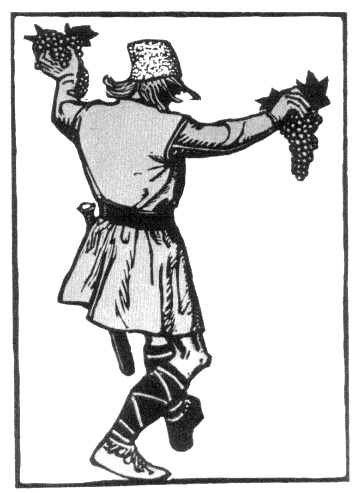
Grapes grow abundantly in many parts of the world: besides the grapes of the classic sites in the Near East and in Europe, there are Chinese grapes, Sudanese grapes, Caribbean grapes. But, though the grape vine is widely tolerant and readily adaptable, it will not grow everywhere, and in some places where it grows vigorously, it still does not grow well for the winemaker’s purposes. The main restrictions are the need for sufficient sun to bring the clusters of fruit to full ripeness, yet sufficient winter chill to allow the vine to go dormant. There is another consideration. The so-called “balance” of a wine requires that the sugar content of the grape—essentially the product of heat—not overwhelm the acid content. Too much heat leads to too much sugar and reduction of flavor. Too little, to too much acid. Either extreme destroys the balance of elements. Since the continental United States lies within the temperate zone of the Northern Hemisphere, it is, most of it, potential vineyard area—though not necessarily good vineyard area. In fact, more species of native vines are found in North America than anywhere else in the world. The number of its native species varies according to the system of classification followed, but it is on the order of thirty, or about half of the number found throughout the entire world. [5]
One must emphasize the word native . The vine of European winemaking, the vine that Noah planted after the Flood, is the species vinifera—”the wine bearer,” in Linnaeus’s Latin—of the genus Vitis , the vine. Vitis vinifera is the vine whose history is identical with the history of wine itself: the leaves of vinifera bind the brows of Dionysus in his triumph; the seeds of vinifera are found with the mummies of the pharaohs in the pyramids. It was the juice of vinifera, mysteriously alive with the powers of fermentation, that led the ancients to connect wine with the spiritual realm and to make it an intimate part of religious ceremony. In the thousands of years during which vinifera has been under cultivation, it has produced thousands of varieties—4,000 by one count, 5,000 by another, 8,000 by yet another, though there is no realistic way to arrive at a figure. [6] The grape is constantly in process of variation through the seedlings it produces, and the recognized varieties are only the tiny fraction selected by man for his purposes from among the uncounted millions that have grown wherever the seeds of the grape have been dropped…

All of the explorers and early settlers made note of the abundant and vigorous wild grape vines—they could hardly help doing so, since they were obviously and everywhere to be seen along the coast of eastern North America. Within two years of Columbus’s discovery, for example, the Spaniards reported vines growing in the Caribbean islands. [9] The Pilgrims in New England found the species now called Vitis labrusca growing profusely in the woods around their settlements. [10]The labrusca, or northern fox grape, is the best looking of the natives, with large berries that may come in black, white, or red. It is the only native grape that exhibits this range of colors. Labrusca is still the best known of the native species because the ubiquitous Concord, the grape that most Americans take to be the standard of “grapeyness” in juice and jellies, is a pure example of it…
Hundreds of miles to the south of the Pilgrim settlements, and even before the Pilgrims landed, the gentlemen of the Virginia Company at Jamestown encountered a number of native grape species, among them the very distinctive one called Vitis rotundifolia —round leaf grape—that grows on bottom lands, on river banks, and in swamps, often covering hundreds of square feet with a single vine…
Both Pilgrims in the north and Virginians in the south would have known the small-berried and harsh-tasting Vitis riparia —the riverbank grape—which is the most widely distributed of all native American grapes…
Another grape widespread throughout the eastern United States is Vitis aestivalis , the summer grape, the best adapted to the making of wine of all the North American natives, though not the most widely used. Unlike the rotundifolia and others, it has adequate sugar in its large clusters of small berries; and it is free of the powerful “foxy” odor of the labrusca…

Take, for example, the earliest reference on record to the grapes growing in what is now the United States. In 1524, only a generation after Columbus, the Italian explorer Giovanni da Verrazzano, coasting north along the Atlantic seaboard, encountered a region so lovely in his eyes that he called it Arcadia.[15] Admiral Samuel Eliot Morison, the latest student of the subject, is of the opinion that Verrazzano meant Kitty Hawk, of Wright brothers fame, off the North Carolina mainland—a region that no one would identify as Arcadian now.[16]…
They might have suspected some difficulty from the fact that none of the Indians they saw had any knowledge of wine; in fact, no eastern Indians had any fermented drinks of any sort, though this fact tells us more about the accidents of culture than about natural possibilities.[19]…
The first reference to the actual making of wine in what is now the United States is in the report of his voyage to Florida in 1565 by the rich and respectable pirate Captain John Hawkins, afterwards Sir John…
Wine and silk, those two luxurious commodities, were constantly linked in the English imagination as the most desirable products (other than gold) that America could yield; as one writer has said, the duet of the vine and silk formed from the beginning “one of the major themes in the vast symphony of colonial hopes that enchanted, for half a century, the England of Elizabeth and James the First.”[26]…”
Complete Article Here: A History of Wine in America From the Beginnings To Prohibition Thomas Pinney


